-
 Bitcoin
Bitcoin $105,185.0222
-2.35% -
 Ethereum
Ethereum $2,530.9127
-7.54% -
 Tether USDt
Tether USDt $1.0004
0.02% -
 XRP
XRP $2.1334
-4.79% -
 BNB
BNB $651.2884
-1.72% -
 Solana
Solana $145.3326
-7.75% -
 USDC
USDC $0.9997
-0.01% -
 Dogecoin
Dogecoin $0.1769
-5.64% -
 TRON
TRON $0.2693
-1.64% -
 Cardano
Cardano $0.6325
-7.03% -
 Hyperliquid
Hyperliquid $40.5973
-4.58% -
 Sui
Sui $3.0228
-9.21% -
 Chainlink
Chainlink $13.1589
-8.35% -
 Bitcoin Cash
Bitcoin Cash $433.5167
-0.81% -
 UNUS SED LEO
UNUS SED LEO $9.0344
1.96% -
 Avalanche
Avalanche $19.0874
-8.76% -
 Stellar
Stellar $0.2581
-5.56% -
 Toncoin
Toncoin $2.9795
-6.23% -
 Shiba Inu
Shiba Inu $0.0...01189
-5.12% -
 Hedera
Hedera $0.1556
-7.28% -
 Litecoin
Litecoin $84.5521
-4.68% -
 Polkadot
Polkadot $3.7768
-6.59% -
 Ethena USDe
Ethena USDe $1.0002
-0.02% -
 Monero
Monero $309.8669
-5.04% -
 Dai
Dai $0.9997
-0.02% -
 Bitget Token
Bitget Token $4.5091
-3.15% -
 Uniswap
Uniswap $7.4994
-5.08% -
 Pepe
Pepe $0.0...01080
-10.34% -
 Aave
Aave $282.7576
-6.18% -
 Pi
Pi $0.5644
-9.37%
How to judge the effectiveness of the Bollinger Band middle track support? What are the rebound signals?
The Bollinger Band middle track, a 20-period SMA, acts as a key support level; traders should look for rebound signals and use additional indicators for confirmation.
Jun 09, 2025 at 07:14 am
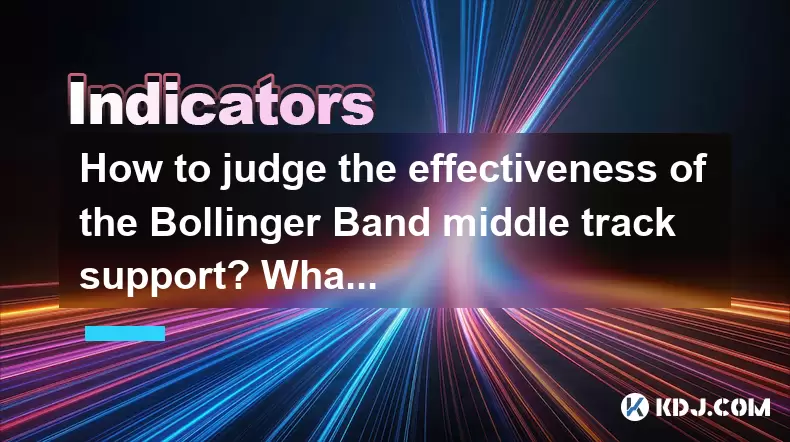
The Bollinger Band is a popular technical analysis tool used by cryptocurrency traders to assess market volatility and potential price movements. Among its components, the middle track, which is typically a simple moving average (SMA), serves as a key indicator of the market's trend direction. Understanding how to judge the effectiveness of the Bollinger Band middle track support and identifying rebound signals can significantly enhance a trader's ability to make informed decisions. This article will explore these aspects in detail.
Understanding the Bollinger Band Middle Track
The middle track of the Bollinger Band is essentially a moving average, usually set at a 20-period SMA. This track represents the average price over the specified period and serves as the baseline for the upper and lower bands. The effectiveness of the middle track as a support level depends on how well it holds the price during pullbacks.
To judge the effectiveness of the middle track support, traders should observe how the price interacts with this line. If the price consistently bounces off the middle track during pullbacks, it indicates strong support. Conversely, if the price frequently breaks below the middle track, it suggests that the support is weak, and the market may be trending downwards.
Identifying Rebound Signals
Rebound signals from the Bollinger Band middle track are crucial for traders looking to enter or exit positions. These signals can be identified through several methods:
Price Touch and Reversal: When the price touches the middle track and then reverses direction, it is a potential rebound signal. This indicates that the middle track is acting as a strong support level.
Candlestick Patterns: Certain candlestick patterns, such as hammers or doji, forming at the middle track can signal a potential rebound. These patterns suggest that the market is rejecting lower prices and may be ready to move higher.
Volume Confirmation: A significant increase in trading volume when the price touches the middle track and reverses can confirm a rebound signal. High volume indicates strong market interest and supports the likelihood of a price increase.
Analyzing Historical Data
To effectively judge the middle track support, traders should analyze historical data. By reviewing past price movements and how the price interacted with the middle track, traders can gain insights into its reliability as a support level.
Backtesting: Conduct backtests on historical data to see how often the price rebounded from the middle track. This can provide statistical evidence of its effectiveness.
Trend Analysis: Consider the overall market trend. In a bullish trend, the middle track is more likely to act as a strong support level. In a bearish trend, its effectiveness may be diminished.
Volatility Levels: Higher volatility can lead to more frequent tests of the middle track. Analyzing periods of high and low volatility can help determine the middle track's reliability under different market conditions.
Using Additional Indicators
While the Bollinger Band middle track is a powerful tool, combining it with other indicators can enhance its effectiveness. Some useful additional indicators include:
Relative Strength Index (RSI): The RSI can help confirm rebound signals. If the RSI is in oversold territory (below 30) when the price touches the middle track, it supports the likelihood of a rebound.
Moving Average Convergence Divergence (MACD): The MACD can provide additional confirmation of a rebound. A bullish crossover of the MACD line above the signal line when the price touches the middle track can signal a potential upward move.
Volume Indicators: Tools like the On-Balance Volume (OBV) can help confirm the strength of a rebound by showing whether volume is increasing as the price moves away from the middle track.
Practical Application in Trading
Applying the concepts of middle track support and rebound signals in real trading scenarios requires a systematic approach. Here’s how traders can integrate these concepts into their trading strategy:
Identify the Middle Track: Use a charting platform to plot the Bollinger Bands with a 20-period SMA as the middle track.
Monitor Price Interaction: Keep a close eye on how the price interacts with the middle track. Look for instances where the price touches or approaches the middle track.
Confirm Rebound Signals: When the price touches the middle track, check for confirming signals such as candlestick patterns, volume spikes, and other technical indicators.
Enter and Exit Positions: Use the confirmed rebound signals to enter long positions. Set stop-loss orders below the middle track to manage risk. Exit positions when the price reaches a predetermined target or shows signs of reversing back towards the middle track.
Case Studies and Examples
Examining real-world examples can provide practical insights into the effectiveness of the Bollinger Band middle track support and rebound signals. Let's look at a couple of case studies:
Case Study 1: In a recent bullish trend in Bitcoin, the price repeatedly touched the 20-period SMA middle track and rebounded. Each touch was accompanied by a hammer candlestick and a significant volume spike, confirming strong support and leading to further price increases.
Case Study 2: During a period of high volatility in Ethereum, the price tested the middle track several times. While some rebounds occurred, the middle track eventually broke, indicating a shift in market sentiment. This example highlights the importance of considering overall market conditions and not relying solely on the middle track.
Frequently Asked Questions
Q1: Can the Bollinger Band middle track be used as resistance in a downtrend?
Yes, in a downtrend, the middle track can act as resistance. When the price touches the middle track and reverses downwards, it indicates that the middle track is serving as a resistance level. Traders can use similar methods to identify rejection signals and confirm them with other indicators.
Q2: How can I adjust the period of the Bollinger Band middle track for different timeframes?
The period of the Bollinger Band middle track can be adjusted based on the timeframe you are trading. For shorter timeframes, such as 15-minute charts, a shorter period like a 10-period SMA might be more suitable. For longer timeframes, such as daily charts, a 20-period or even a 50-period SMA could be more appropriate. Experiment with different periods to find what works best for your trading style.
Q3: Is it necessary to use the Bollinger Band middle track in conjunction with other indicators?
While the Bollinger Band middle track can be used on its own, combining it with other indicators can enhance its effectiveness and provide more robust trading signals. Using additional indicators like RSI, MACD, and volume indicators can help confirm rebound signals and improve the overall accuracy of your trading strategy.
Q4: How can I avoid false signals when using the Bollinger Band middle track?
To avoid false signals, it's important to look for confirmation from multiple sources. Use additional technical indicators, analyze volume, and consider the overall market trend. Additionally, waiting for a clear candlestick pattern or a significant volume spike when the price touches the middle track can help filter out false signals. Always use proper risk management techniques, such as stop-loss orders, to protect against potential losses from false signals.
Disclaimer:info@kdj.com
The information provided is not trading advice. kdj.com does not assume any responsibility for any investments made based on the information provided in this article. Cryptocurrencies are highly volatile and it is highly recommended that you invest with caution after thorough research!
If you believe that the content used on this website infringes your copyright, please contact us immediately (info@kdj.com) and we will delete it promptly.
- The Next Floki Inu? Why Arctic Pablo Coin ($APC) Could Be the Next Big Meme Coin
- 2025-06-14 02:50:12
- Top 3 Cryptocurrency Presales to Buy Now in 2025: Nexchain, WeWake Finance, and Aigent Network
- 2025-06-14 02:50:12
- 1976 Bicentennial Quarter Could Be Worth $2.5 Billion
- 2025-06-14 02:45:12
- Trove of 1,720 “Napoléons” gold coins discovered in a modest stone house
- 2025-06-14 02:45:12
- Ethereum (ETH) ETF Inflows Hit 4-Month Highs, BlackRock's iShares Ethereum Trust (ETHA) Dominates
- 2025-06-14 02:40:12
- Bitcoin Price (BTC Price) Fell Down to USD 1,08,000 Today
- 2025-06-14 02:40:12
Related knowledge
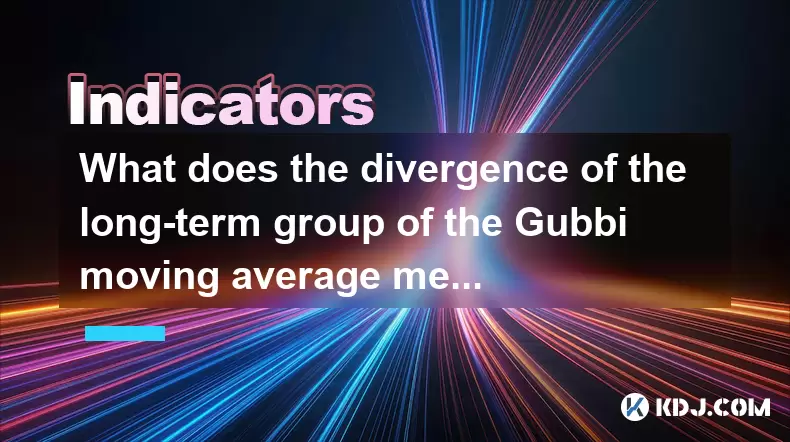
What does the divergence of the long-term group of the Gubbi moving average mean? How long can the trend last?
Jun 14,2025 at 02:56am
Understanding the Gubbi Moving AverageThe Gubbi moving average is a technical indicator used by traders in cryptocurrency markets to identify trends and potential reversals. Unlike traditional moving averages, the Gubbi variant incorporates unique calculations that emphasize price momentum and volatility adjustments. This makes it particularly useful fo...
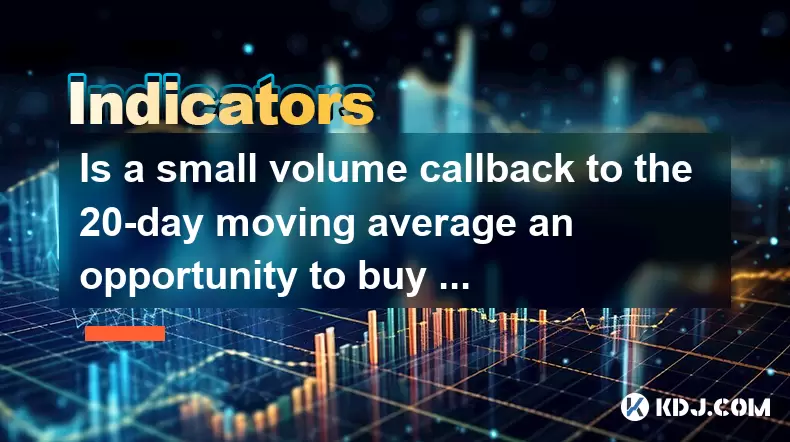
Is a small volume callback to the 20-day moving average an opportunity to buy low? What is the key to look at?
Jun 14,2025 at 02:28am
Understanding the 20-Day Moving Average in Cryptocurrency TradingIn cryptocurrency trading, the 20-day moving average (20DMA) is a commonly used technical indicator that helps traders assess the short-term trend of an asset. It calculates the average price of a cryptocurrency over the last 20 days and smooths out price volatility. When a coin experience...
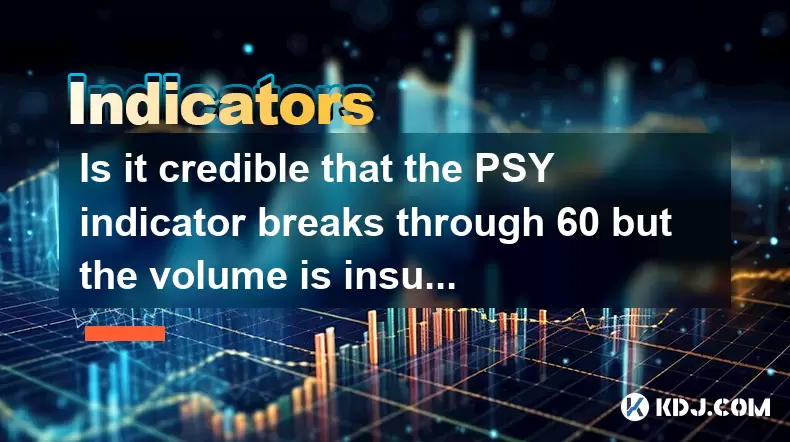
Is it credible that the PSY indicator breaks through 60 but the volume is insufficient?
Jun 14,2025 at 12:14am
Understanding the PSY Indicator in Cryptocurrency TradingThe Psychological Line (PSY) indicator is a momentum oscillator used primarily to measure the sentiment of traders and investors in financial markets, including the cryptocurrency space. It calculates the ratio of days where prices closed higher versus lower over a specified period, typically 12 o...
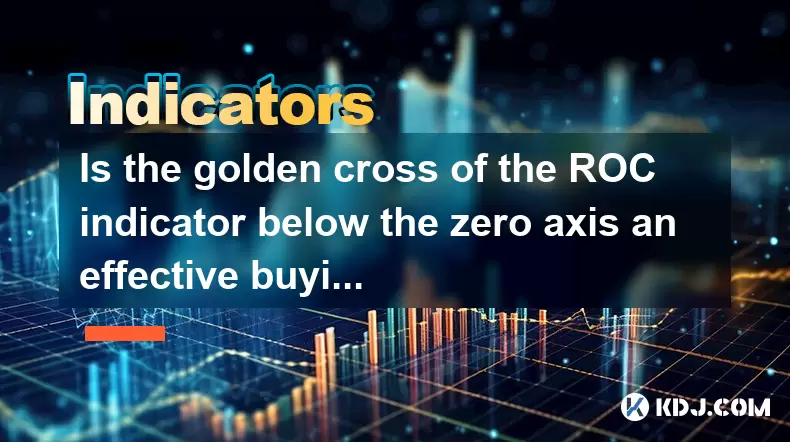
Is the golden cross of the ROC indicator below the zero axis an effective buying point?
Jun 14,2025 at 01:29am
Understanding the ROC Indicator and Its SignificanceThe Rate of Change (ROC) indicator is a momentum oscillator used in technical analysis to measure the percentage change in price between the current closing price and the closing price from a set number of periods ago. This tool helps traders assess the speed at which prices are changing, offering insi...
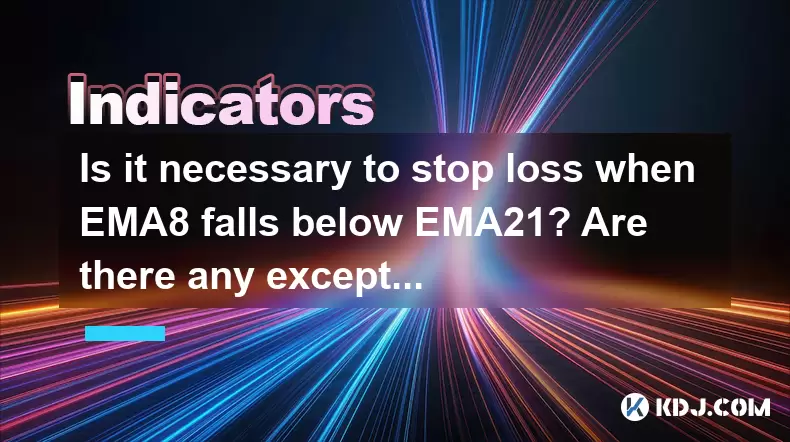
Is it necessary to stop loss when EMA8 falls below EMA21? Are there any exceptions?
Jun 14,2025 at 02:42am
Understanding EMA8 and EMA21 in Cryptocurrency TradingIn cryptocurrency trading, Exponential Moving Averages (EMAs) are widely used technical indicators to identify trends and potential reversal points. The EMA8 refers to the 8-period exponential moving average, while EMA21 is the 21-period EMA. These tools help traders make informed decisions by smooth...

Will the RSI fall after the top divergence? How to improve the judgment accuracy?
Jun 13,2025 at 11:21pm
Understanding RSI and Top Divergence in Cryptocurrency TradingThe Relative Strength Index (RSI) is a momentum oscillator widely used in cryptocurrency trading to measure the speed and change of price movements. It typically ranges from 0 to 100, with levels above 70 considered overbought and below 30 considered oversold. In crypto markets, where volatil...

What does the divergence of the long-term group of the Gubbi moving average mean? How long can the trend last?
Jun 14,2025 at 02:56am
Understanding the Gubbi Moving AverageThe Gubbi moving average is a technical indicator used by traders in cryptocurrency markets to identify trends and potential reversals. Unlike traditional moving averages, the Gubbi variant incorporates unique calculations that emphasize price momentum and volatility adjustments. This makes it particularly useful fo...

Is a small volume callback to the 20-day moving average an opportunity to buy low? What is the key to look at?
Jun 14,2025 at 02:28am
Understanding the 20-Day Moving Average in Cryptocurrency TradingIn cryptocurrency trading, the 20-day moving average (20DMA) is a commonly used technical indicator that helps traders assess the short-term trend of an asset. It calculates the average price of a cryptocurrency over the last 20 days and smooths out price volatility. When a coin experience...

Is it credible that the PSY indicator breaks through 60 but the volume is insufficient?
Jun 14,2025 at 12:14am
Understanding the PSY Indicator in Cryptocurrency TradingThe Psychological Line (PSY) indicator is a momentum oscillator used primarily to measure the sentiment of traders and investors in financial markets, including the cryptocurrency space. It calculates the ratio of days where prices closed higher versus lower over a specified period, typically 12 o...

Is the golden cross of the ROC indicator below the zero axis an effective buying point?
Jun 14,2025 at 01:29am
Understanding the ROC Indicator and Its SignificanceThe Rate of Change (ROC) indicator is a momentum oscillator used in technical analysis to measure the percentage change in price between the current closing price and the closing price from a set number of periods ago. This tool helps traders assess the speed at which prices are changing, offering insi...

Is it necessary to stop loss when EMA8 falls below EMA21? Are there any exceptions?
Jun 14,2025 at 02:42am
Understanding EMA8 and EMA21 in Cryptocurrency TradingIn cryptocurrency trading, Exponential Moving Averages (EMAs) are widely used technical indicators to identify trends and potential reversal points. The EMA8 refers to the 8-period exponential moving average, while EMA21 is the 21-period EMA. These tools help traders make informed decisions by smooth...

Will the RSI fall after the top divergence? How to improve the judgment accuracy?
Jun 13,2025 at 11:21pm
Understanding RSI and Top Divergence in Cryptocurrency TradingThe Relative Strength Index (RSI) is a momentum oscillator widely used in cryptocurrency trading to measure the speed and change of price movements. It typically ranges from 0 to 100, with levels above 70 considered overbought and below 30 considered oversold. In crypto markets, where volatil...
See all articles

























































































